Usama Masood
Towards using Cough for Respiratory Disease Diagnosis by leveraging Artificial Intelligence: A Survey
Sep 24, 2023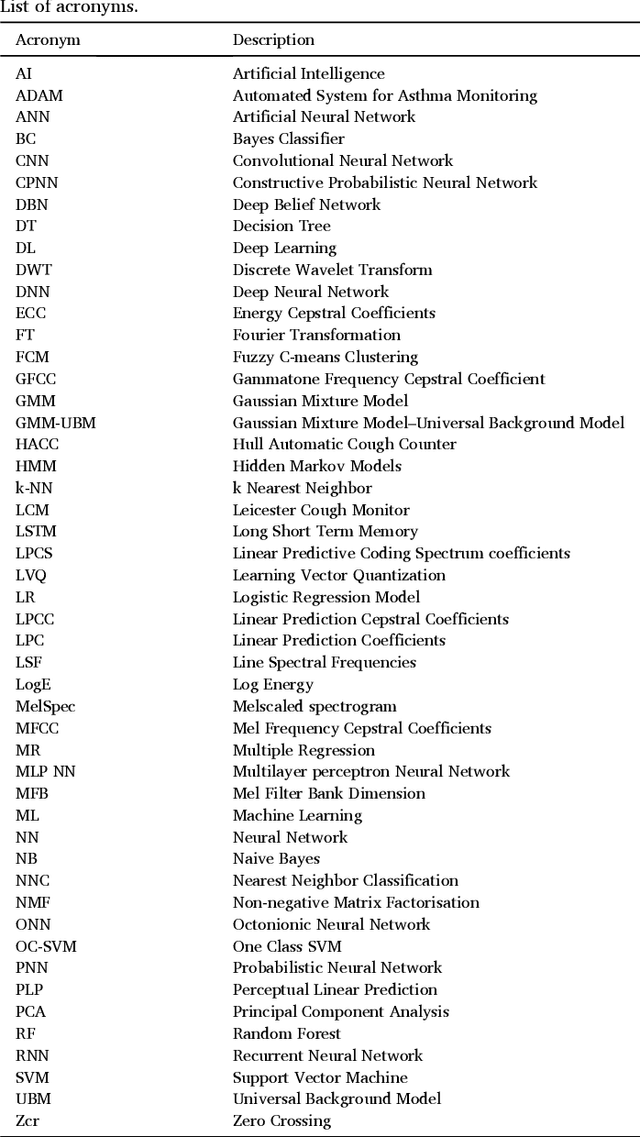
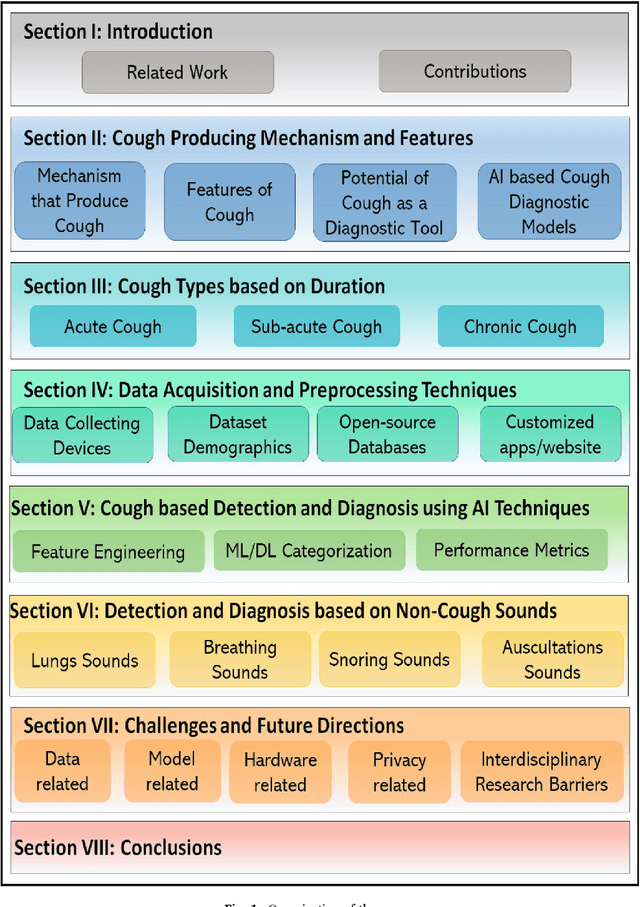
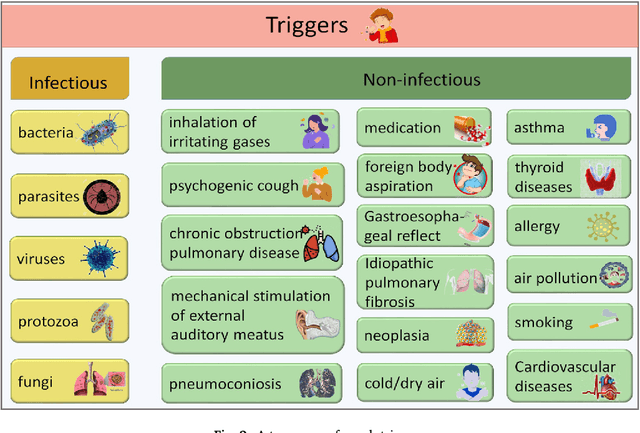
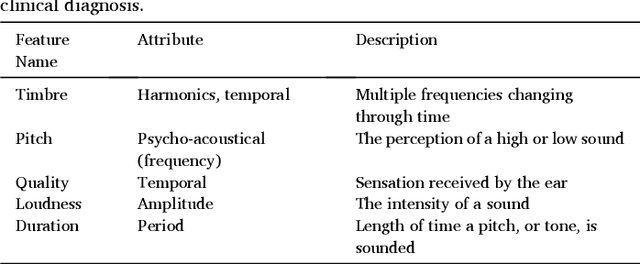
Abstract:Cough acoustics contain multitudes of vital information about pathomorphological alterations in the respiratory system. Reliable and accurate detection of cough events by investigating the underlying cough latent features and disease diagnosis can play an indispensable role in revitalizing the healthcare practices. The recent application of Artificial Intelligence (AI) and advances of ubiquitous computing for respiratory disease prediction has created an auspicious trend and myriad of future possibilities in the medical domain. In particular, there is an expeditiously emerging trend of Machine learning (ML) and Deep Learning (DL)-based diagnostic algorithms exploiting cough signatures. The enormous body of literature on cough-based AI algorithms demonstrate that these models can play a significant role for detecting the onset of a specific respiratory disease. However, it is pertinent to collect the information from all relevant studies in an exhaustive manner for the medical experts and AI scientists to analyze the decisive role of AI/ML. This survey offers a comprehensive overview of the cough data-driven ML/DL detection and preliminary diagnosis frameworks, along with a detailed list of significant features. We investigate the mechanism that causes cough and the latent cough features of the respiratory modalities. We also analyze the customized cough monitoring application, and their AI-powered recognition algorithms. Challenges and prospective future research directions to develop practical, robust, and ubiquitous solutions are also discussed in detail.
Interpretable AI-based Large-scale 3D Pathloss Prediction Model for enabling Emerging Self-Driving Networks
Jan 30, 2022



Abstract:In modern wireless communication systems, radio propagation modeling to estimate pathloss has always been a fundamental task in system design and optimization. The state-of-the-art empirical propagation models are based on measurements in specific environments and limited in their ability to capture idiosyncrasies of various propagation environments. To cope with this problem, ray-tracing based solutions are used in commercial planning tools, but they tend to be extremely time-consuming and expensive. We propose a Machine Learning (ML)-based model that leverages novel key predictors for estimating pathloss. By quantitatively evaluating the ability of various ML algorithms in terms of predictive, generalization and computational performance, our results show that Light Gradient Boosting Machine (LightGBM) algorithm overall outperforms others, even with sparse training data, by providing a 65% increase in prediction accuracy as compared to empirical models and 13x decrease in prediction time as compared to ray-tracing. To address the interpretability challenge that thwarts the adoption of most ML-based models, we perform extensive secondary analysis using SHapley Additive exPlanations (SHAP) method, yielding many practically useful insights that can be leveraged for intelligently tuning the network configuration, selective enrichment of training data in real networks and for building lighter ML-based propagation model to enable low-latency use-cases.
A Machine Learning based Framework for KPI Maximization in Emerging Networks using Mobility Parameters
May 04, 2020



Abstract:Current LTE network is faced with a plethora of Configuration and Optimization Parameters (COPs), both hard and soft, that are adjusted manually to manage the network and provide better Quality of Experience (QoE). With 5G in view, the number of these COPs are expected to reach 2000 per site, making their manual tuning for finding the optimal combination of these parameters, an impossible fleet. Alongside these thousands of COPs is the anticipated network densification in emerging networks which exacerbates the burden of the network operators in managing and optimizing the network. Hence, we propose a machine learning-based framework combined with a heuristic technique to discover the optimal combination of two pertinent COPs used in mobility, Cell Individual Offset (CIO) and Handover Margin (HOM), that maximizes a specific Key Performance Indicator (KPI) such as mean Signal to Interference and Noise Ratio (SINR) of all the connected users. The first part of the framework leverages the power of machine learning to predict the KPI of interest given several different combinations of CIO and HOM. The resulting predictions are then fed into Genetic Algorithm (GA) which searches for the best combination of the two mentioned parameters that yield the maximum mean SINR for all users. Performance of the framework is also evaluated using several machine learning techniques, with CatBoost algorithm yielding the best prediction performance. Meanwhile, GA is able to reveal the optimal parameter setting combination more efficiently and with three orders of magnitude faster convergence time in comparison to brute force approach.
Neuromorphic AI Empowered Root Cause Analysis of Faults in Emerging Networks
May 04, 2020



Abstract:Mobile cellular network operators spend nearly a quarter of their revenue on network maintenance and management. A significant portion of that budget is spent on resolving faults diagnosed in the system that disrupt or degrade cellular services. Historically, the operations to detect, diagnose and resolve issues were carried out by human experts. However, with diversifying cell types, increased complexity and growing cell density, this methodology is becoming less viable, both technically and financially. To cope with this problem, in recent years, research on self-healing solutions has gained significant momentum. One of the most desirable features of the self-healing paradigm is automated fault diagnosis. While several fault detection and diagnosis machine learning models have been proposed recently, these schemes have one common tenancy of relying on human expert contribution for fault diagnosis and prediction in one way or another. In this paper, we propose an AI-based fault diagnosis solution that offers a key step towards a completely automated self-healing system without requiring human expert input. The proposed solution leverages Random Forests classifier, Convolutional Neural Network and neuromorphic based deep learning model which uses RSRP map images of faults generated. We compare the performance of the proposed solution against state-of-the-art solution in literature that mostly use Naive Bayes models, while considering seven different fault types. Results show that neuromorphic computing model achieves high classification accuracy as compared to the other models even with relatively small training data
AI4COVID-19: AI Enabled Preliminary Diagnosis for COVID-19 from Cough Samples via an App
Apr 16, 2020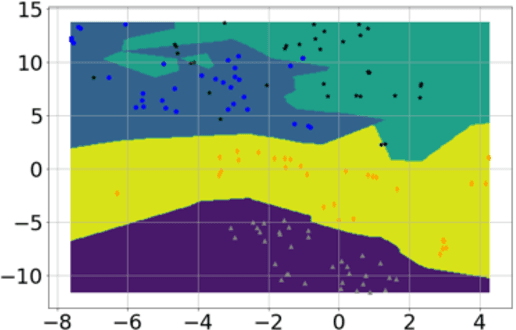

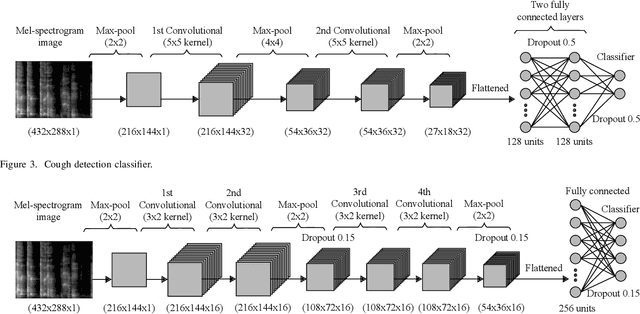
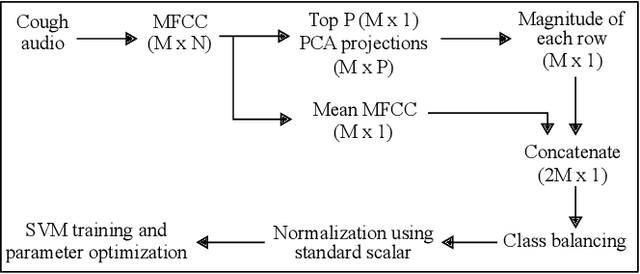
Abstract:Inability to test at scale has become Achille's heel in humanity's ongoing war against COVID-19 pandemic. An agile, scalable and cost-effective testing, deployable at a global scale, can act as a game changer in this war. To address this challenge, building on the promising results of our prior work on cough-based diagnosis of a motley of respiratory diseases, we develop an Artificial Intelligence (AI)-based test for COVID-19 preliminary diagnosis. The test is deployable at scale through a mobile app named AI4COVID-19. The AI4COVID-19 app requires 2-second cough recordings of the subject. By analyzing the cough samples through an AI engine running in the cloud, the app returns a preliminary diagnosis within a minute. Unfortunately, cough is common symptom of over two dozen non-COVID-19 related medical conditions. This makes the COVID-19 diagnosis from cough alone an extremely challenging problem. We solve this problem by developing a novel multi-pronged mediator centered risk-averse AI architecture that minimizes misdiagnosis. At the time of writing, our AI engine can distinguish between COVID-19 patient coughs and several types of non-COVID-19 coughs with over 90% accuracy. AI4COVID-19's performance is likely to improve as more and better data becomes available. This paper presents a proof of concept to encourage controlled clinical trials and serves as a call for labeled cough data. AI4COVID-19 is not designed to compete with clinical testing. Instead, it offers a complementing tele-testing tool deployable anytime, anywhere, by anyone, so clinical-testing and treatment can be channeled to those who need it the most, thereby saving more lives.
Can Machine Learning Be Used to Recognize and Diagnose Coughs?
Apr 01, 2020
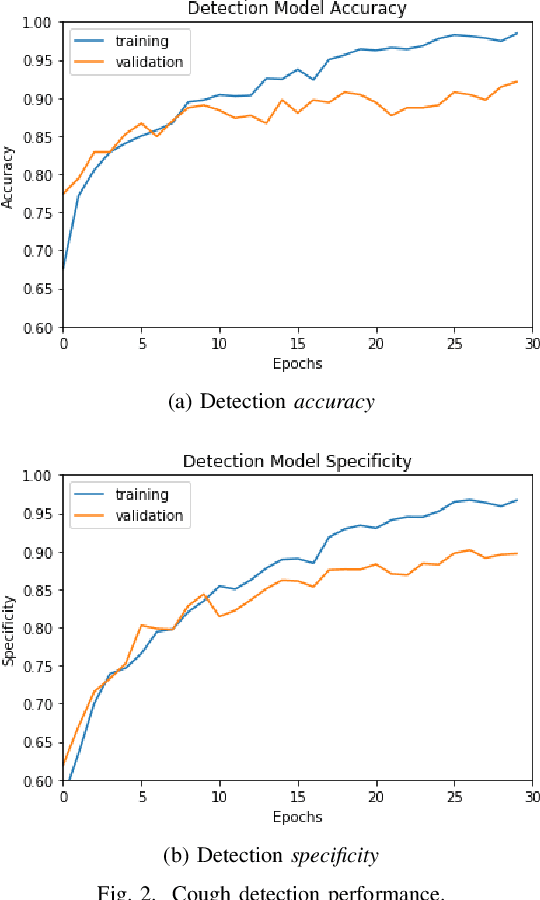
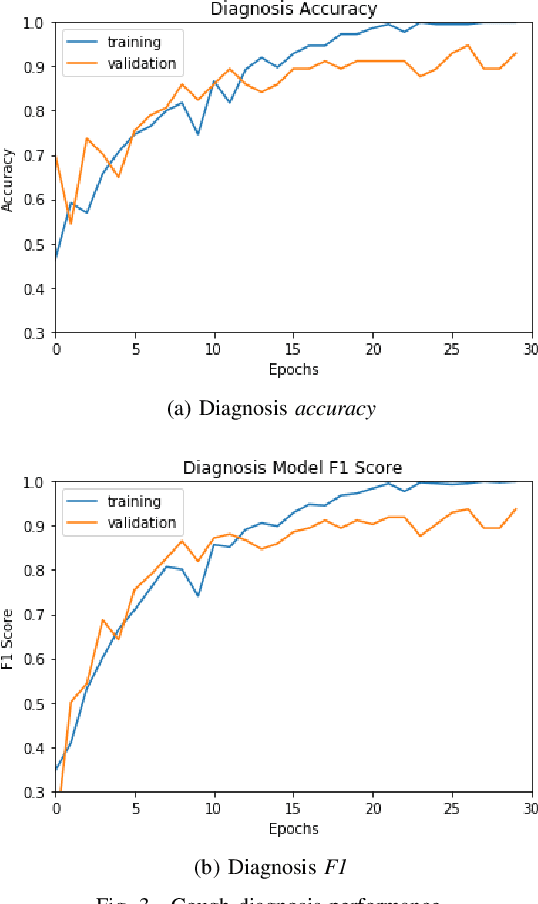
Abstract:5G is bringing new use cases to the forefront, one of the most prominent being machine learning empowered health care. Since respiratory infections are one of the notable modern medical concerns and coughs being a common symptom of this, a system for recognizing and diagnosing infections based on raw cough data would have a multitude of beneficial research and medical applications. In the literature, machine learning has been successfully used to detect cough events in controlled environments. In this work, we present a novel system that utilizes Convolutional Neural Networks (CNNs) to detect cough within environment audio and diagnose three potential illnesses (i.e., Bronchitis, Bronchiolitis, and Pertussis) based on their unique cough audio features. Our detection model achieves an accuracy of 90.17% and a specificity of 89.73%, whereas the diagnosis model achieves an accuracy of about 94.74% and an F1 score of 93.73%. These results clearly show that our system is successfully able to detect and separate cough events from background noise. Moreover, our single diagnosis model is capable of distinguishing between different illnesses without the need of separate models.
 Add to Chrome
Add to Chrome Add to Firefox
Add to Firefox Add to Edge
Add to Edge